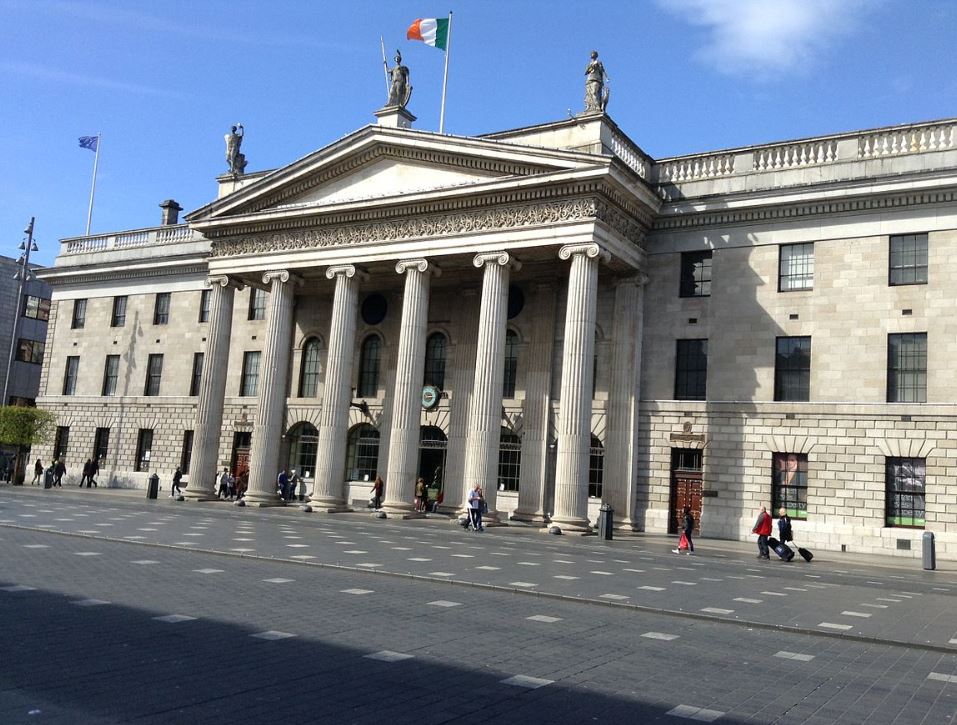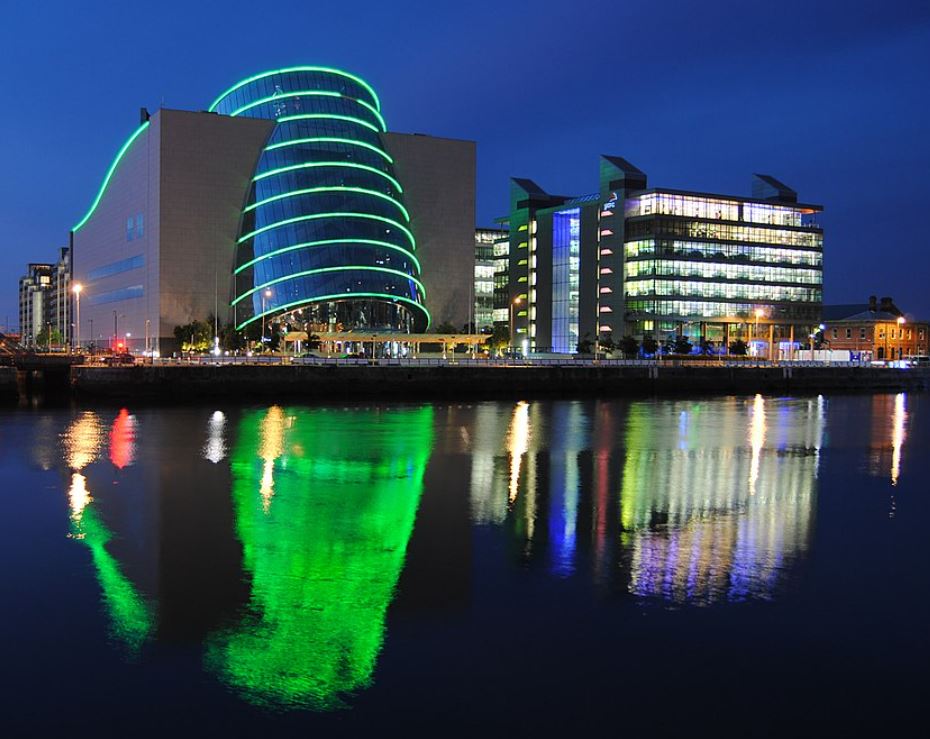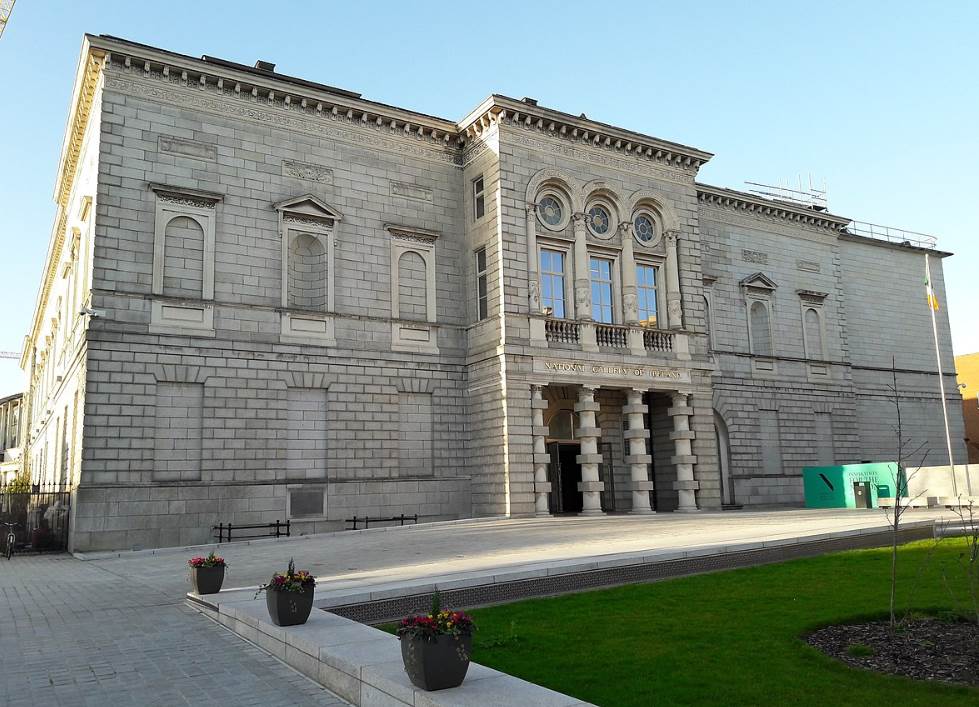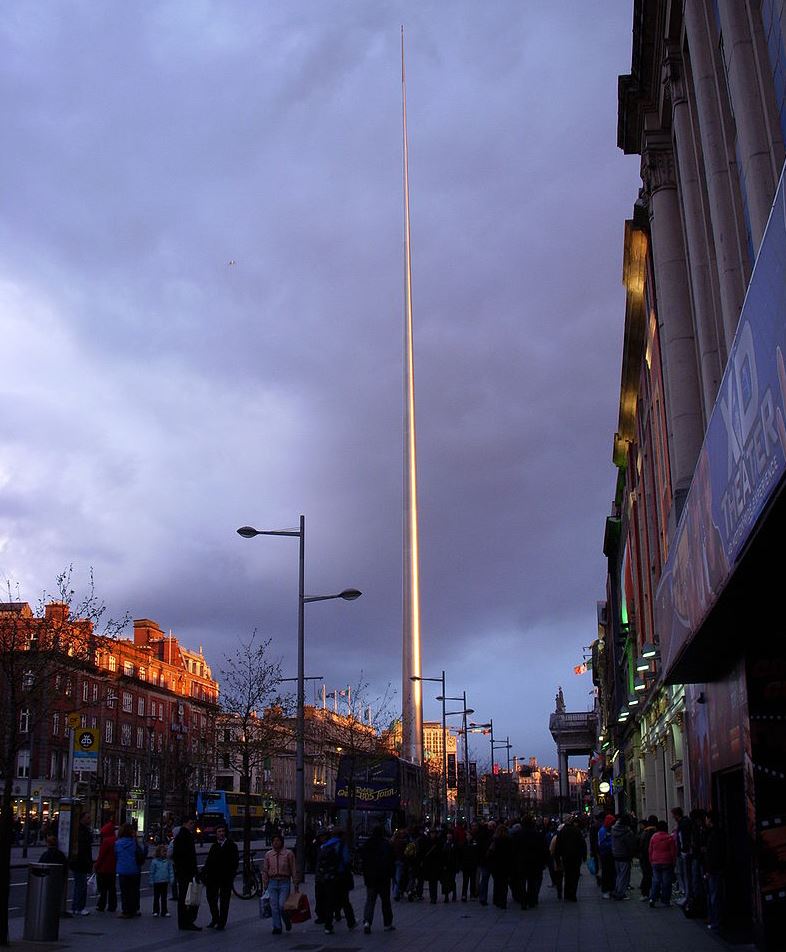Just north of the beautiful Dublin Mountains, the capital city of Ireland was established on the banks of the River Liffey.
Its name was derived from the Irish word “Duibhlinn” which translates to “dark tidal pool.” This was a reference to a natural feature in the historical heart of the city.
The Romans knew a settlement existed here in the 2nd century and called it “Eblana polis.” Dublin as we know it today, however, wasn’t established until the year 988.
The city never really grew until a trade route of wool and linen was established with the English in the 17th century. By 1700, the city had a population of about 50,000 inhabitants.
The 18th century was a glorious period in Dublin’s history. Georgian Dublin was the 2nd-largest city in the British Empire and the 5th-largest city in Europe with over 130,000 inhabitants.
Not much of Georgian Dublin was kept during redevelopment projects conducted in the 20th century. The city remains, however, home to several fascinating landmarks.
In this article, you’ll discover some of the most famous buildings in Dublin.
1. The Custom House
The Custom House is one of the most beautiful landmarks in Dublin and is located right in the heart of the city. This Neoclassical building was constructed between 1781 and 1791 and is the visual expression of one of the best periods in Dublin’s history.
This is further emphasized by the fact that a former customs house had been built in this location in 1707, but it was deemed too small by the end of the 18th century. Today, the building houses the Department of Housing, Local Government, and Heritage, and also serves as a tourist attraction.
Official website: Custom House

2. St Patrick’s Cathedral
St Patrick’s Cathedral is the main church of the Church of Ireland which is part of the Anglican Communion. It’s the national church of Ireland and not the local cathedral of the Diocese of Dublin. This is reserved for Christ Church Cathedral.
The church was founded as a Catholic cathedral in 1191 and incorporates a remarkable Gothic architectural style. It’s far from being the largest church in the world with a length of 87 meters (287 feet) and a width of 49 meters (160 feet). The spire, which reaches a height of 69 meters (225 feet), makes it a remarkable landmark.
Official website: St Patrick’s Cathedral

3. Dublin City Hall
Dublin City Hall is another stunning Neoclassical building that was constructed during the 18th century. It was completed between 1769 and 1779 and designed by English-born Irish architect Thomas Cooley (1740-1784). This man designed several Neoclassical buildings in Dublin during this period.
What’s remarkable is that the building was originally constructed as Dublin’s Royal Exchange. It’s only since the early 1850s, after several modifications to the interior of the building, that it started being used as the city’s beautiful city hall building.
Official website: Dublin City Hall

4. Samuel Beckett Bridge
Samuel Beckett Bridge is a distinctive cable-stayed swingbridge that is located a few blocks east of the Custom House in central Dublin. It was designed by the Spanish architect Santiago Calatrava and constructed between 2007 and 2009.
Calatrava has designed similar bridges all around the world and as you can see, these amazing bridges have become some of the most stunning landmarks wherever they were built. Remarkably, the much smaller James Joyce Bridge upriver was also designed by him and completed in 2003.

5. Dublin Castle
Dublin Castle is the name of one of the oldest buildings in Dublin as it was constructed by the Normans as the main fortification of the city. This famous castle was constructed here because this is the highest point in central Dublin so it provided a great lookout spot.
Even though this former Motte-and-bailey castle was first established in 1204, most of the current buildings of this structure date back to the 18th century. Another remarkable fact about this building is that it was here where the so-called “Dark Tidal Pool’ was located, the body of water that gave Dublin its name.
Official website: Dublin Castle

6. General Post Office
As the name of the General Post Office describes, this building in Dublin serves as the headquarters of An Post, the Irish post service. It’s located in the middle of O’Connell Street, the main thoroughfare in the heart of the city.
Built between 1814 and 1818, it was the final major Georgian building that was constructed in the city. It was here that the leaders of the Easter Rising set up their headquarters in 1916. This is something that adds an extra dimension to this building with a portico featuring 6 fluted Ionic columns. You can explore the history of the Easter Rising inside the building.
Official website: GPO Museum

7. Leinster House
Leinster House is yet another historic 18th-century building in Dublin and one of the most important structures in the city. It was completed between 1745 and 1748 and currently serves as the seat of the Oireachtas, the Parliament of Ireland.
The building served as the official residence of the Duke of Leinster until it was repurposed as the parliament building of the Irish Free State in 1922. It was originally called Kildare House because it was James FitzGerald, Earl of Kildare, who initially constructed it in the mid-18th century.
Official website: Leinster House

8. Convention Centre Dublin
The Convention Centre Dublin is a large convention center that is located right next to Samuel Beckett Bridge. Together, these two modern landmarks form the most amazing sight in the heart of Dublin, a city full of historic 18th-century buildings.
The construction of this building started in 1998 but was remarkably not completed until 2010. The budget for this huge landmark was £104 million in 1999, which was an incredibly hefty sum at the time. The glass façade featuring curved walls was an innovative feat of architecture at the time.
Official website: The CCD

9. National Gallery of Ireland
The National Gallery of Ireland is the national museum in the country and houses an incredible collection of paintings. It has both Irish and European paintings on display and is especially known for Dutch and Italian masterpieces completed by some of the greatest artists in history.
The museum was established in 1854, a year after the Great Industrial Exhibition was held in the garden of Leinster House. This event provided proof that there were plenty of art enthusiasts in the city so it was decided to establish a permanent art collection in Dublin. Today, it’s the most popular art museum in Ireland.
Official website: National Gallery

10. Spire of Dublin
The Spire of Dublin is an incredible monument that is also known as the “Monument of Light.” This huge pin-like landmark stands 120 meters (390 feet) tall. It was erected on the location of the former Nelson’s Pillar, a monument that was erected in 1809 but that was destroyed in 1966.
Remarkably, this site reminded vacant until the early 21st century. This immense spire wasn’t completed until 2004 and cost approximately €4 million to build. Not everybody was enthusiastic about the monument, mainly because it doesn’t bear a historical reference to the city.



